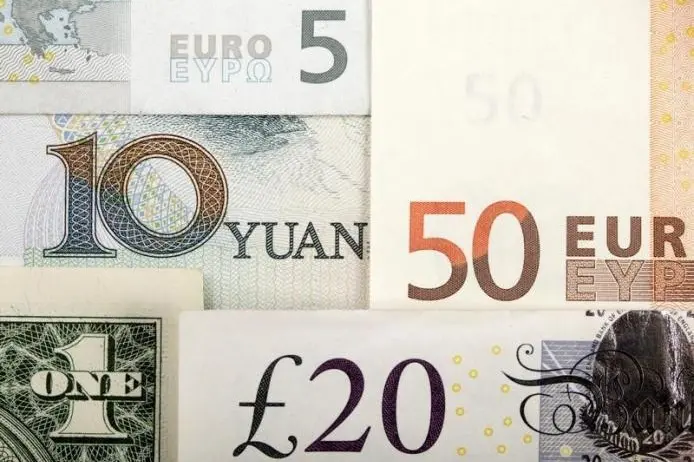PHOTO
Since the early 2010s, ‘currency wars' was becoming a growing buzzword, where major central banks around the world were tightening their policies, while others were left with no choice but to devaluate their currencies. While history may be repeating itself, there are lessons to learn. And as for the bigger picture? Egypt is not alone.
Currency wars typically involve countries with a competitive export edge on one side and import-based economies on the other. According to the Washington Post, the phrase “currency wars” first emerged around 2010, when Brazil’s then-finance minister, Guido Mantega, accused wealthier nations of devaluing their currencies to stimulate economies still reeling from the 2008 financial crisis.
But it was decades earlier when a round of devaluations across the world in the 1920s was thought to have stimulated the Great Depression. It was said that countries were depressing the value of their currencies on purpose just to increase their exports.
Fast forward to 2022, with the US hiking its interest rates in its most aggressive move in 30 years, it has set the scene for yet another currency war, where other economies are setting their places on the chessboard of the world of trade.
As import-based economies have been taking one hit after another, their currencies’ devaluation against the US dollar is inevitably being affected by the imports of foreign goods and the lack thereof. Therefore, imports are getting more expensive for weak economies, further causing inflationary pressure and deepening devaluation for them.
Since March, Egypt has devalued the pound and hiked interest rates twice. Meanwhile, the country has endeavored to secure pledges of over $20 billion in deposits and investments from Gulf nations, in addition to its ongoing talks with the International Monetary Fund on a possible support loan.
The Egyptian pound fell against the US dollar in March by 1%, after a 14% devaluation, standing at a range between EGP 17.42 and EGP 18.52, compared to EGP 15.7 a day earlier, Reuters reported, citing data from US-based Refinitiv Financial Solutions.
The overnight devaluation of the EGP raised many question marks back then concerning the future and the prospects of the Egyptian economy.
Egypt previously devalued the pound in 2016, when it traded at EGP 8.88 at that time, then reached its weakest shortly after the devaluation, trading at EGP 19.62 in December 2016.
Head of Macro and Financials at HC Monette Doss said after the devaluation: “We believe that the combination of EGP devaluation along with higher interest rates will result in a rebound in Egypt’s carry trade and help finance Egypt’s external funding needs,” noting that “carry trade could rebound at a yield of 14.2%-14.5% for 12-month T-bills, implying a real return of around c.1% on our calculations.”
Meanwhile, according to a report by Logic Consulting, currency devaluation has become inevitable for two main reasons: trade balance deficit and debt burden.
The Central Agency for Public Mobilization and Statistics (CAPMAS) recently announced that Egypt’s trade balance deficit dropped 39.7% to $2.26 billion in March 2022, compared to $3.74 billion in March 2021.
The government has endeavored to secure foreign exchange reserves through other sources such as tourism and the Suez Canal, Logic Consulting’s report highlighted, noting that nonetheless “Egypt’s vulnerability to external shocks worsened.”
“What exacerbates the problem is that Egypt resorts to recycling its debts, reborrowing to repay short-term loans, and only 3.6% is allocated to education, health, and measures to alleviate poverty. This has made the Egyptian economy mainly dependent on external borrowing,” the report added.
Economists at Goldman Sachs, however, think that the EGP devaluation is likely to generate inflows of foreign currency and might hold the outflow impact. It is unlikely for the foreign holder of Egyptian T-bills to sell now to avoid short-term losses.
According to a briefing released on June 21 by Oxford Economics, Egypt is not alone, as most Middle East and North Africa (MENA) countries are facing “higher public debt burdens, a more challenging interest rate climate, and fiscal fatigue.”
On the economic front, inflation, unemployment, a decline in exports, and currency depreciation have been persistent woes in many countries across MENA.
For instance, in Yemen, $1 is exchanged for 1,100 Yemeni rials, an unofficial rate that is used by all money exchangers. Even with pledges of financial support packages from neighboring countries, in addition to policies in place to counter the currency devaluation, the value of the Yemeni rial has been having a downward trend against foreign currencies.
Another local currency that is rapidly being devalued against other major currencies is Zimbabwe’s, especially after its inflation for June jumped to 191.6%. However, the country is set to introduce gold coins as an instrument to restore value and mitigate pressure caused by the US dollar.
Cited by the World Bank as one of the worst depressions in world history, Lebanon’s financial crisis was going to be tackled by a 93% devaluation of its pound. The Lebanese government has put a 15-year plan in place to wipe out 75% of the value of $16 billion in deposits accrued thanks to high-interest rates since 2015.
Thus, in many instances, devaluation is being seen as a solution to the economic woes that are spotted in many countries rather than a result. In Egypt, the devaluation was inevitable, but coupled with robust measures by the government, it can help in promoting a healthy investment climate that attracts foreign businessmen.





















